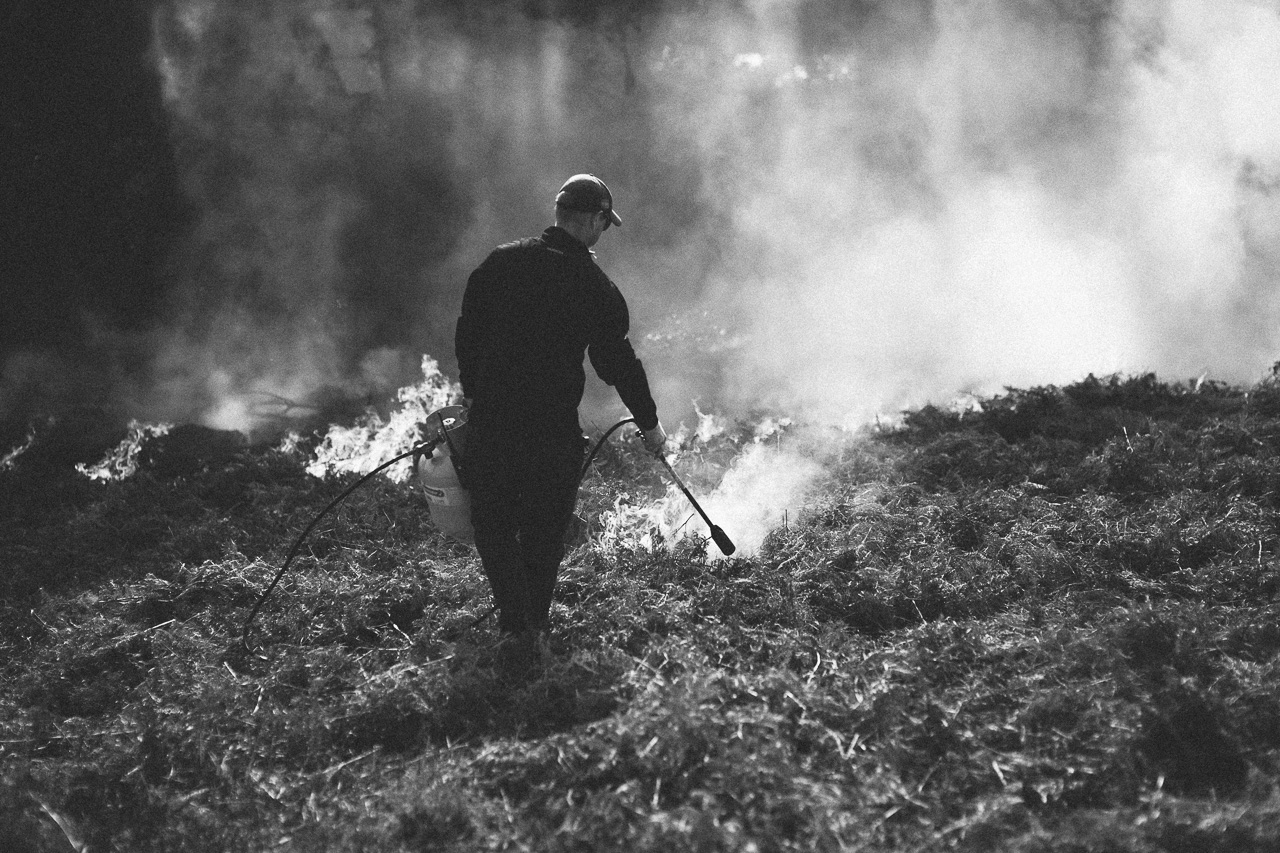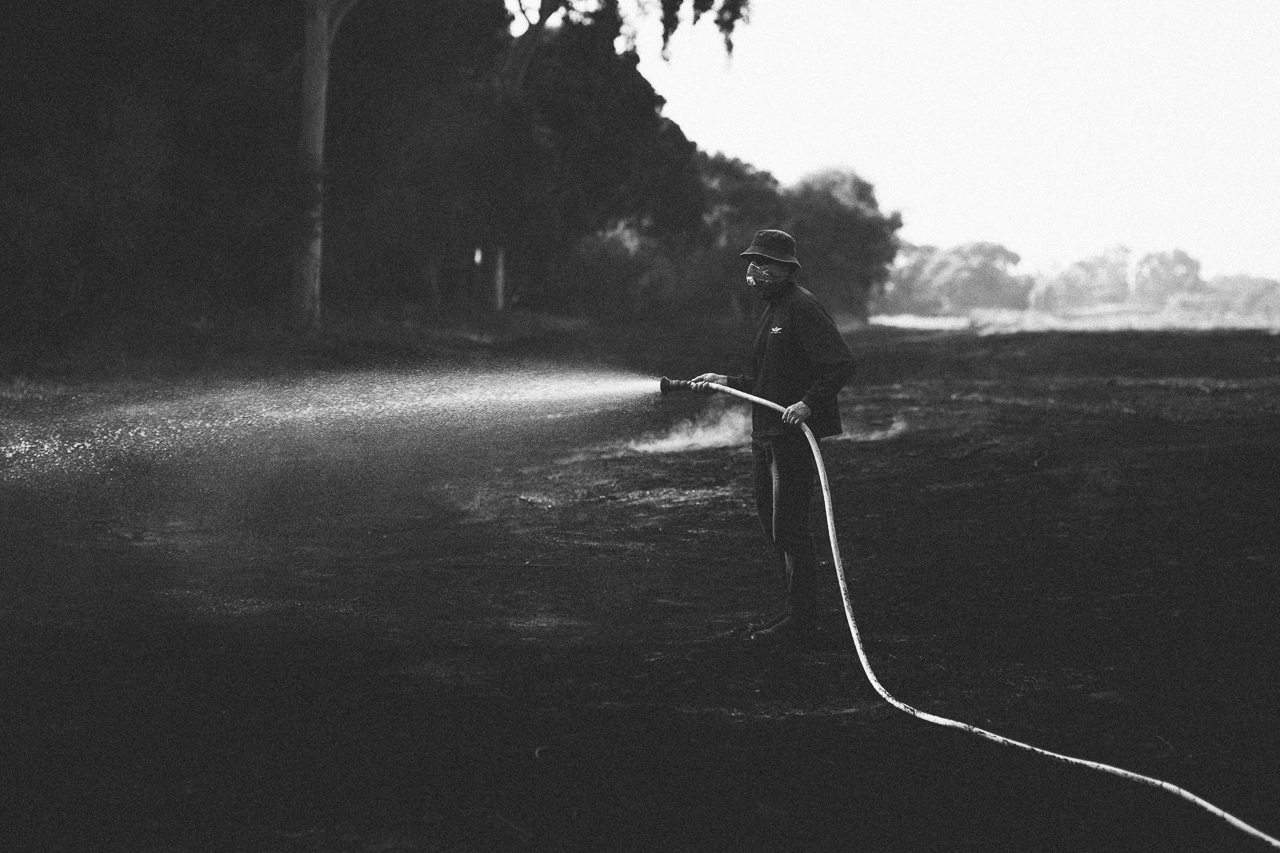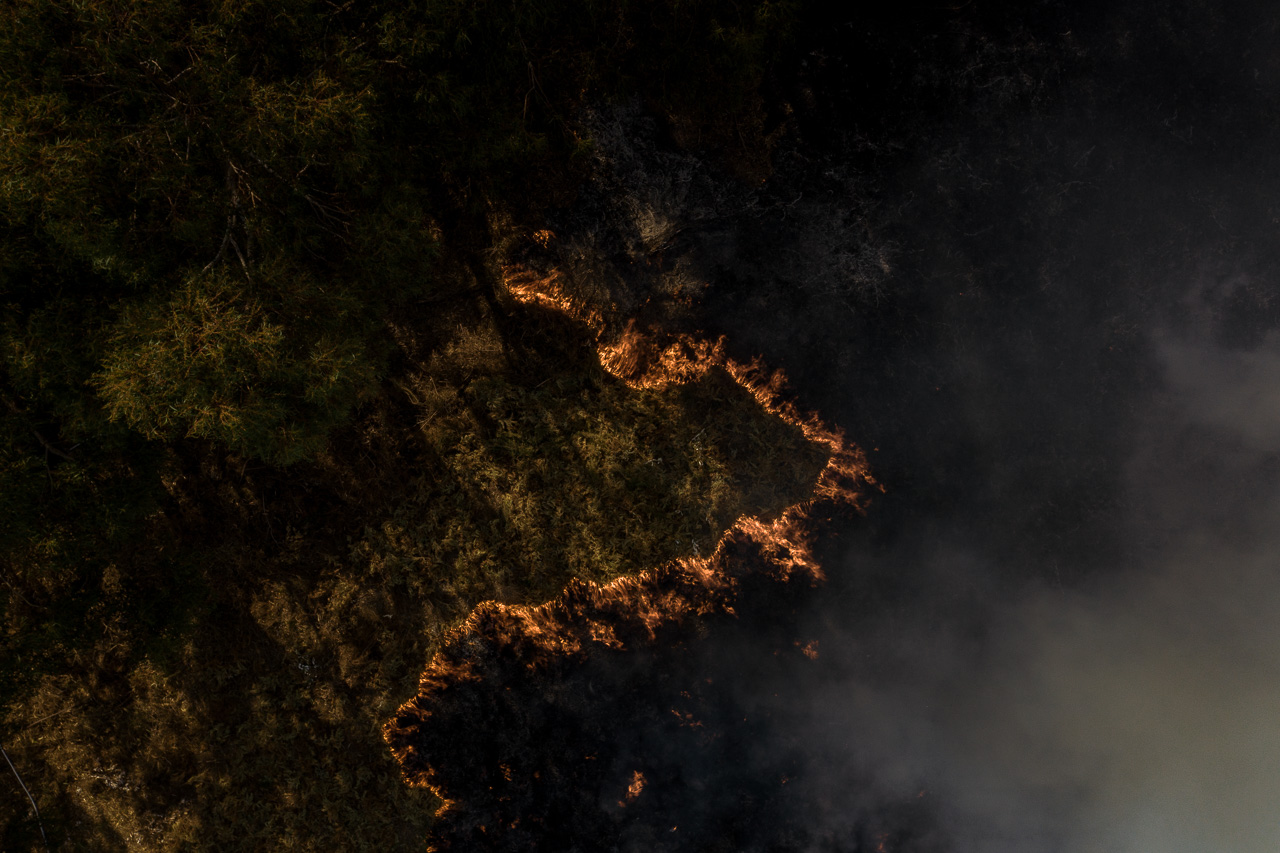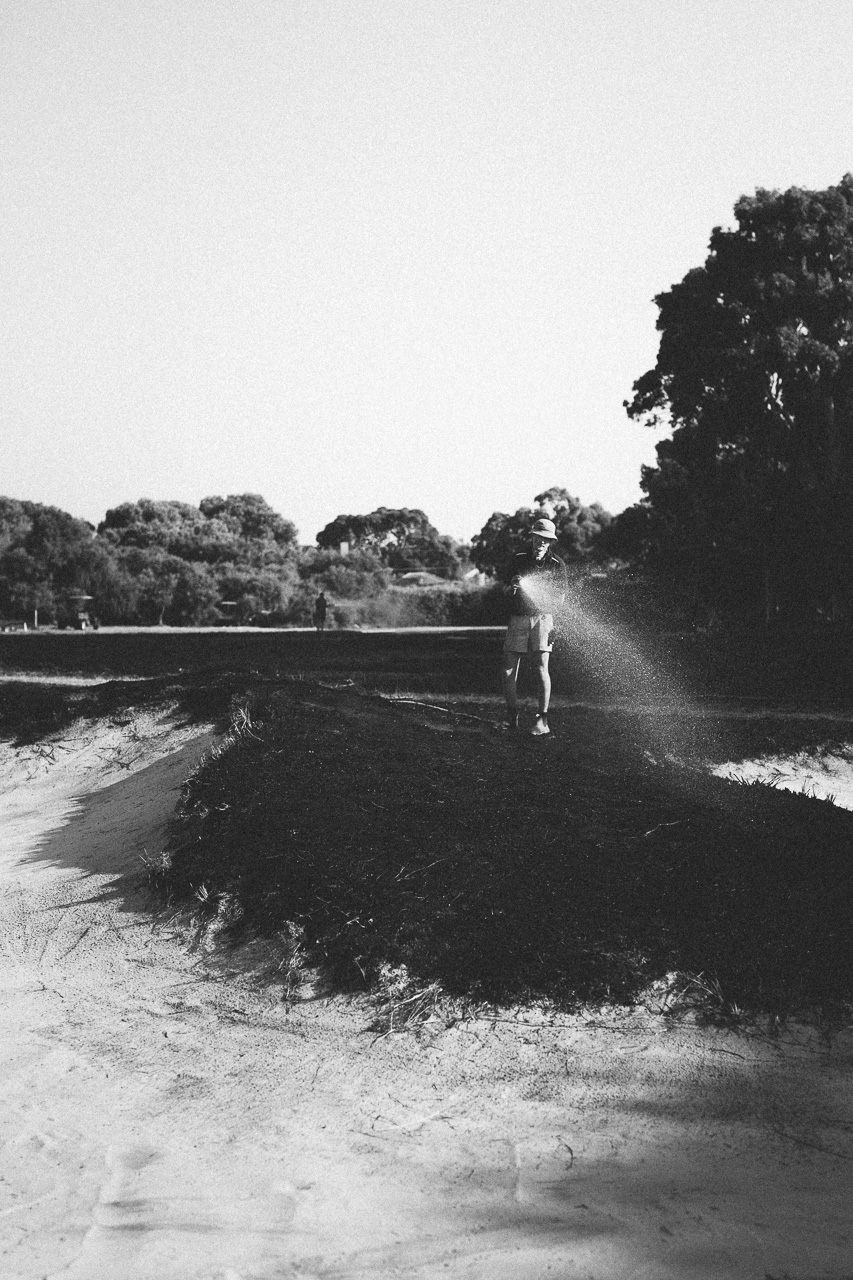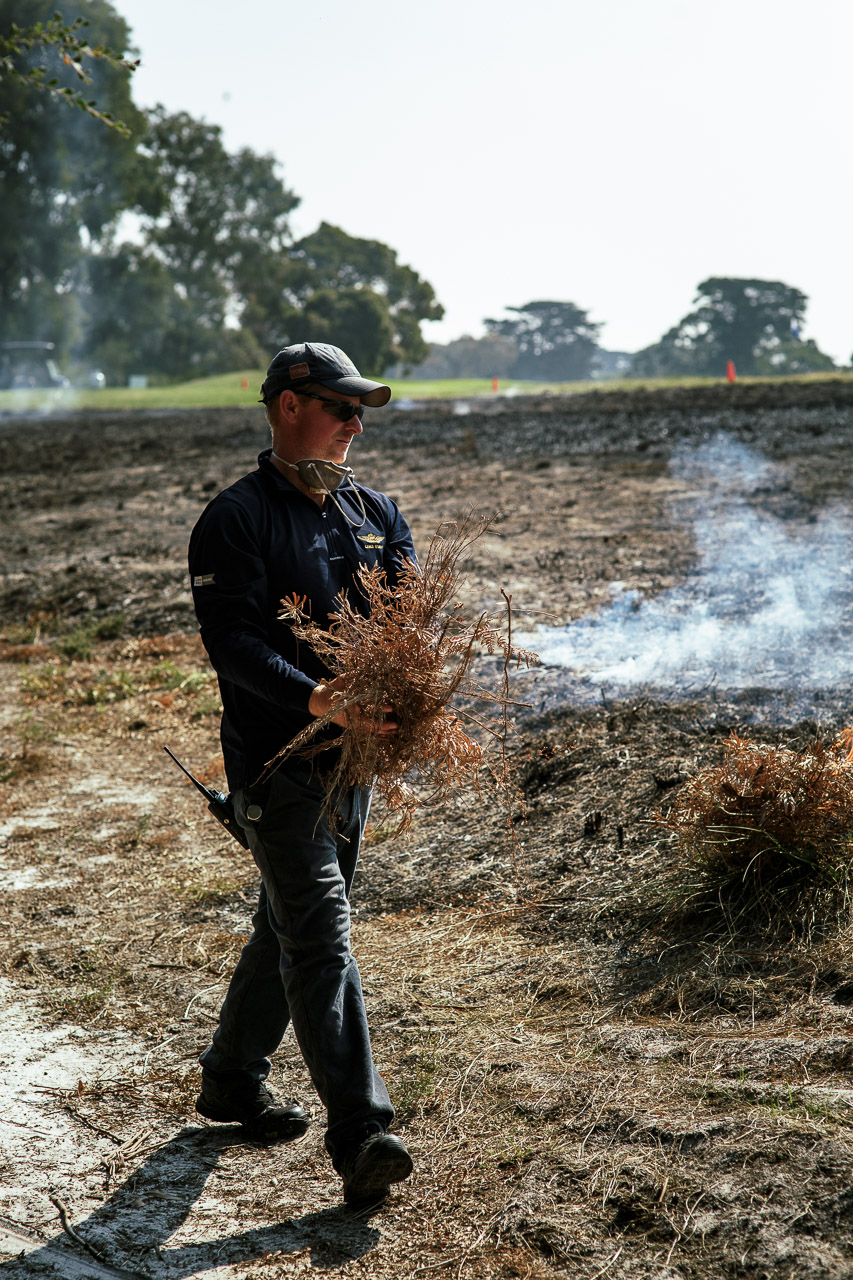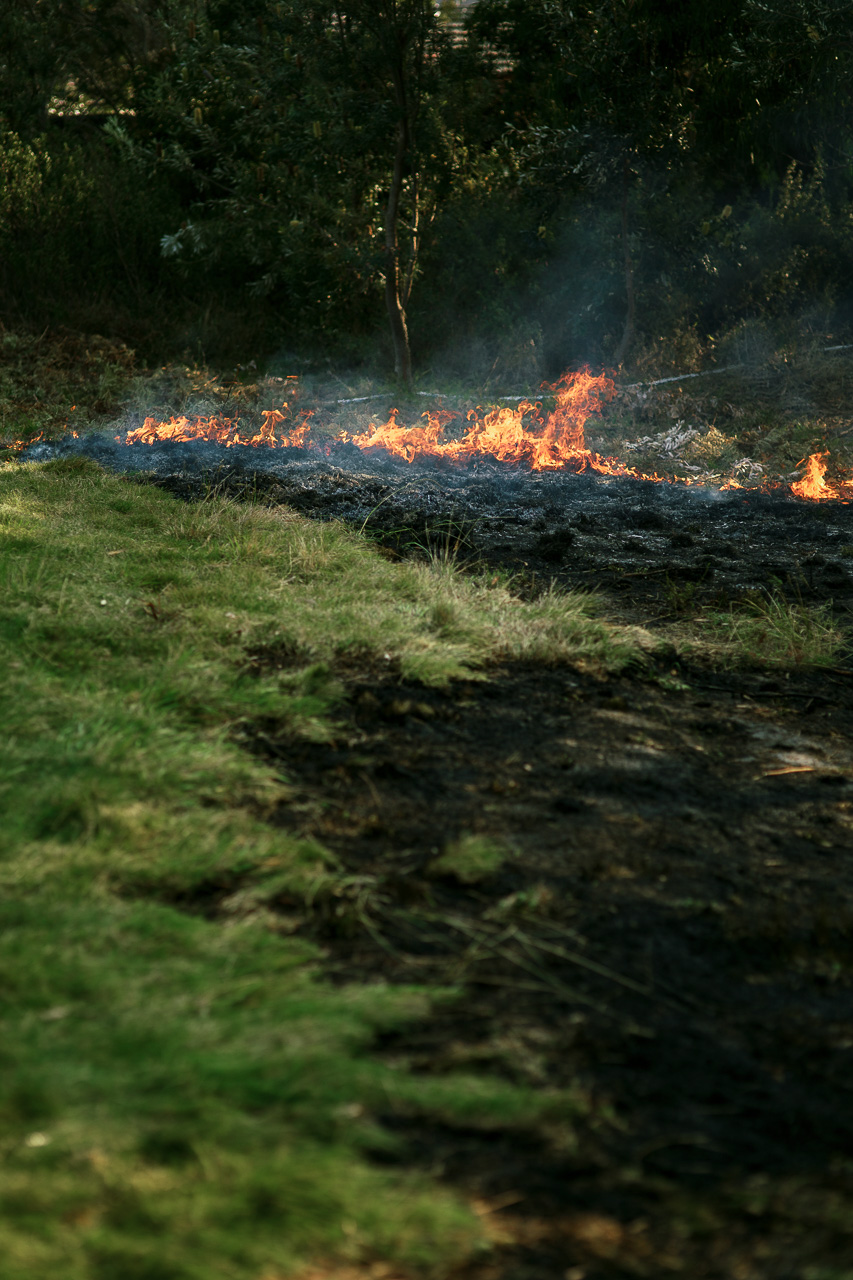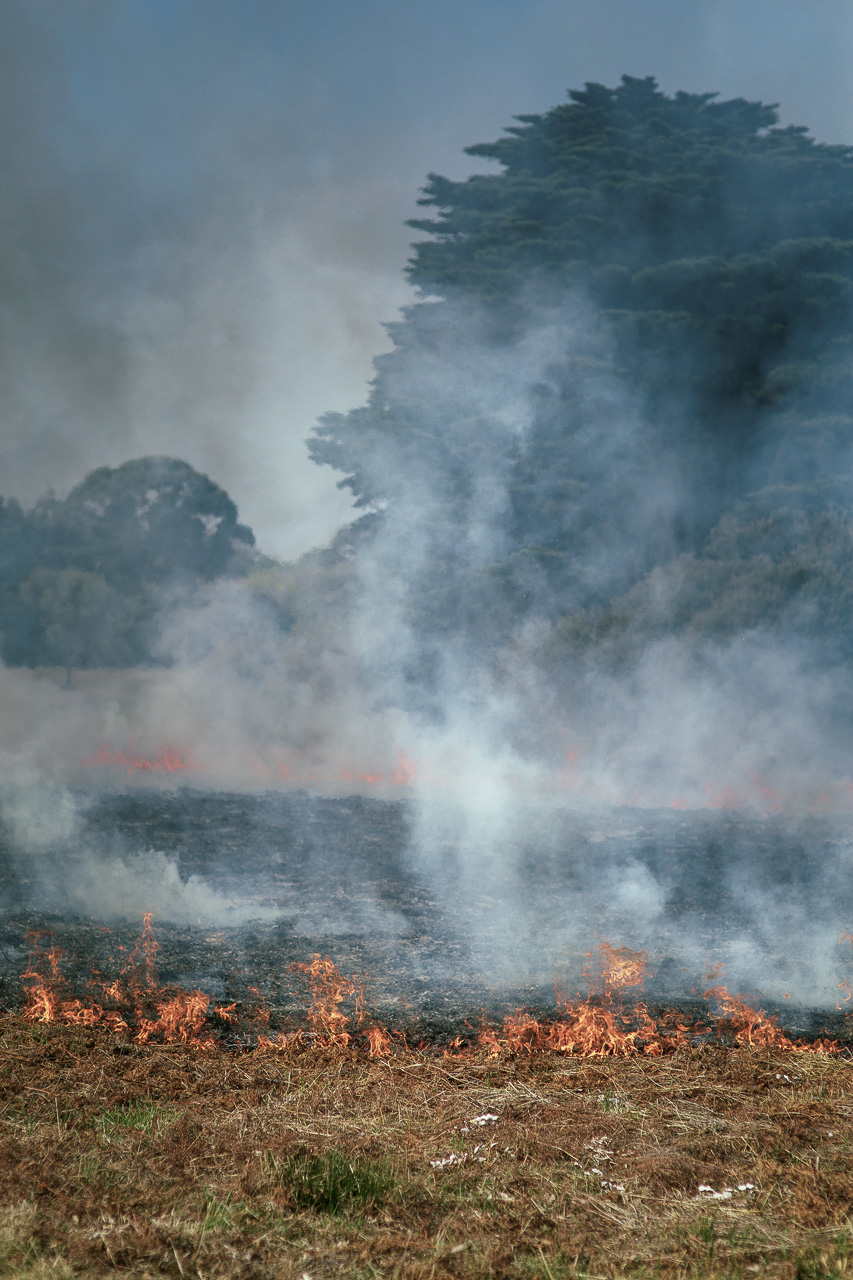Richard Forsyth:
“The indigenous heathland has always been part of the character of the courses here. We can see some history in the club records in the 50s, where they used burning as a management tool. So it has a long history. But in the last 15 or 20 years we have been using it more systematically each year, doing cyclical burns on specific areas on about a seven to eight year cycle.
It’s very important in terms of keeping that balance between playability and keeping the vegetation there. We find its very important tool to keep those areas in the best condition possible.”







